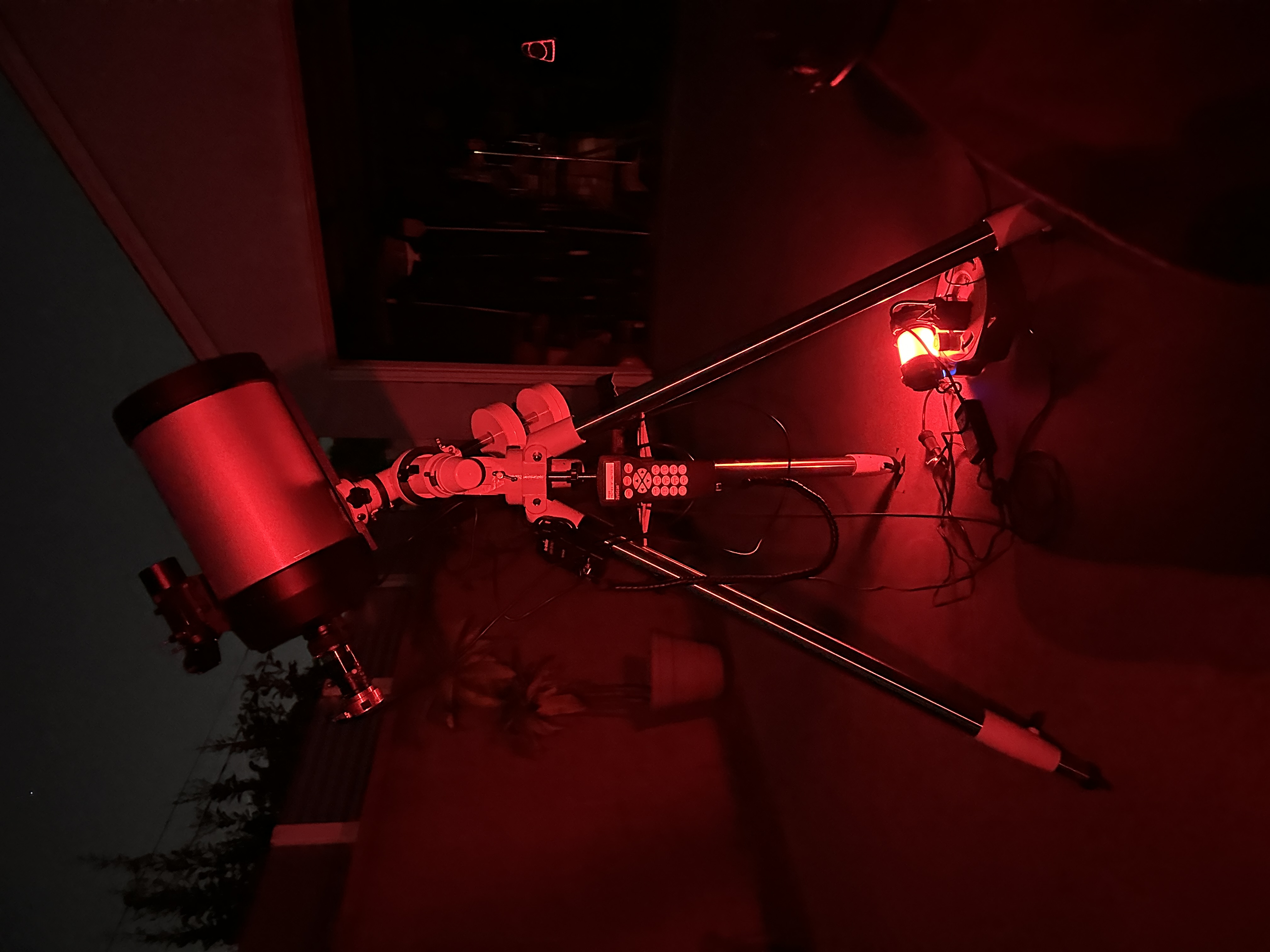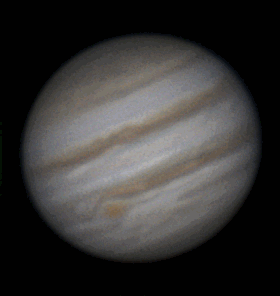
I took this opportunity to test my new EQM-35 mount with my Evolution 8" OTA telescope to see if it could handle the weight. I could clearly notice a difference in the mount's gears performance compared to my Z61. The 8" OTA, which weighs a little over 15 pounds with everything attached to it, is close to the mount's 22-pound limit, but it seemed to handle it well. I might need to fine-tune the balance of the telescope to reduce any strain, but overall, I was pleased with how it performed, and attaching it to the mount wasn't too difficult.
While I was patiently waiting for Jupiter to rise above the tree line, I decided to dedicate some time to capturing images of Saturn, as it was positioned high in the sky. I was eager to observe how using an EQ mount would impact planetary photography compared to my alt/az mount, which tends to introduce rotation into the images.
After a 1-minute exposure, I quickly stacked the data

and was pleasantly surprised by the image quality. Encouraged by the initial results, I proceeded to take 10 additional 1-minute exposures. The final outcomes were very satisfying, and I believe this is the best Saturn image I've managed to capture so far. Although I'm still grappling with the image processing aspect, I'm quite content with the results I achieved.
After patiently waiting for Jupiter to rise above the tree line, I began capturing images, even though it was still quite low on the horizon and affected by significant atmospheric dispersion. Fortunately, as I started imaging, the Great Red Spot began to make its appearance, giving me the opportunity to create a captivating animation of its transit across the planet's surface. Unfortunately, due to the planet's low position during the initial phase of imaging, I couldn't obtain any usable frames for the start of the transit. Nonetheless, I did manage to capture approximately 95% of this mesmerizing event.

As the night went on, the quality of the atmospheric conditions, or "seeing," started to improve, and this improvement came just in time for the central appearance of the Great Red Spot.
I'm quite pleased with this image, particularly the level of detail in the central region of the Great Red Spot. As of now, I don't believe I can capture a better shot, so I'll consider this my final Jupiter image for the year and shift my focus towards visually observing this magnificent giant in the night sky.

Before I started packing up my equipment, I made a decision to turn my attention to Uranus. Uranus will reach opposition later this month on the 13th, and while I'm not certain if the results will be significantly better than this photo, it's possible that it may appear larger. So, Uranus will be my next planetary target as I aim to capture more celestial wonders before the year concludes.
